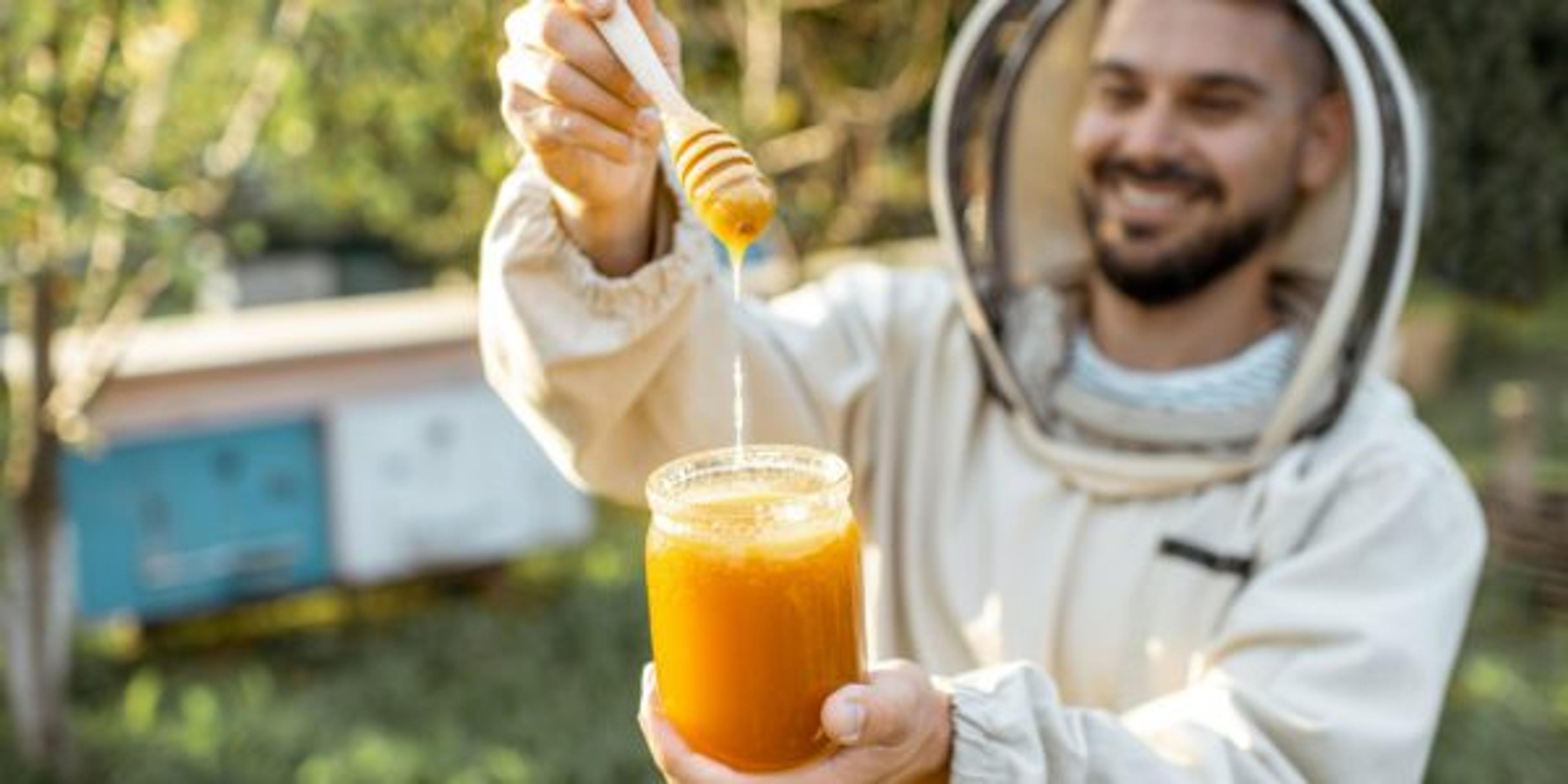Fall Allergies: Does Local Honey Help?
Jake Newby
| 3 min read

For seasonal allergy sufferers, the changing hues of autumn can signal a time of sneezing, watery eyes, sinus headaches and coughing. These symptoms can send some people reaching for over-the-counter allergy medications to stem the sniffles. Others look for more natural alternatives. One that has gotten a lot of buzz in recent years is consuming honey harvested from local hives. But does local honey really help with fall allergies? Let’s take a look.
Fall allergies are a very common malady. More than 60 million people in the United States deal with some form of these seasonal nose, eye and throat irritations that are largely triggered by material in the air, according to the Centers for Disease Control and Prevention. Some of the most common causes of fall allergies include:
- Pollen: Little seeds or grains of flowering grasses, plants or trees that are blown by the wind and can be breathed in, causing respiratory issues.
- Ragweed pollen: This green, fast-growing plant is considered one of the biggest triggers of fall allergies. Pollen from these plants can stay in the air until October, or even longer. A single ragweed plant can produce a billion grains of pollen, the CDC said. That’s a lot of sneeze potential.
- Mold spores in damp leaves
- Dust mites in furnaces or heating pipes
The honey-pollen connection
With the focus on pollen as the cause for most fall allergies, it has sparked a lot of discussion about whether eating locally-produced honey is a way to lessen allergy symptoms. Some people see it as similar to getting allergy shots in that it exposes people to allergy-causing pollen in small doses, helping people to build up their tolerance to what is sparking their sneezing and itchy eyes. Advocates believe that honey created by bees in the same area a person lives contains the kind of pollen that is fueling their allergies. So, stirring a few spoonfuls into a cup of tea or drizzling some honey onto a piece of toast will help people strengthen their tolerance. They view it as a form of immunotherapy.
What the research shows
There’s no definitive answer on whether eating local honey will actually help lessen fall allergy symptoms. A few studies have been done on the topic, but they’ve mostly been small in sampling size and have finished with mixed results, according to Healthline. One study showed that people who ate large amounts of local honey did get some relief from their allergy symptoms. But another study that pitted local, raw honey against pasteurized honey showed no difference for allergy sufferers.
The bee factor
One big flaw in the honey alternative treatment idea is where the pollen in honey typically comes from. While people’s allergies are traditionally triggered by pollen from trees or ragweed, bees are most often drawn to brightly-colored flowers to collect the pollen that then works its way into their hive’s honey supply. So the type of pollen people are eating in local honey is probably not the same kind of pollen that is setting off their allergy symptoms. This makes the argument for eating local honey to build tolerance fall flat.
Health experts believe taking over-the-counter medication and avoiding spending time outdoors on days when the pollen count is high are more predictable ways to control fall allergy symptoms.
More From AHM:
Photo credit: Getty Images





